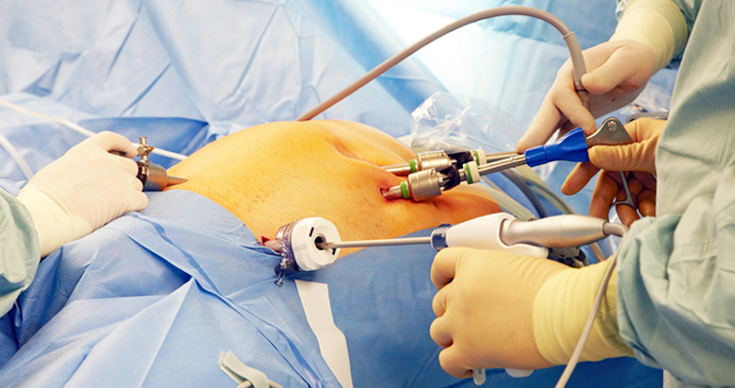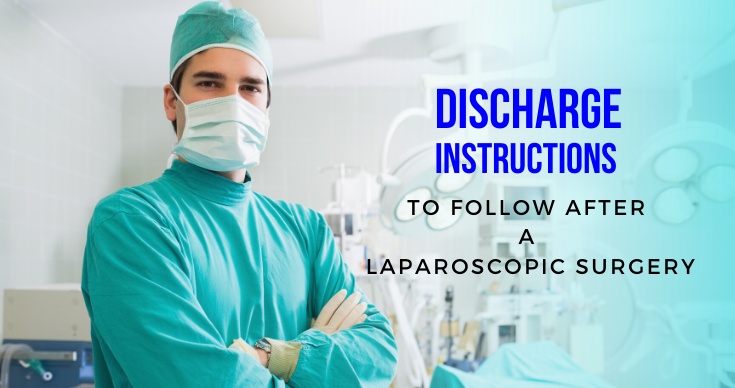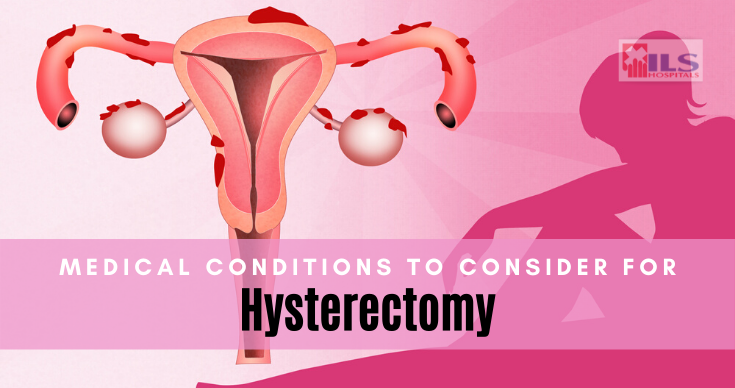Everything You Should Know About Minimally Invasive Surgery or Most commonly known as Key-Hole Surgery/Laparoscopic Surgery
Minimally invasive surgery which is most commonly known as the Key-Hole Surgery or Laparoscopic Surgery, is a specialised and advanced technique for conducting surgeries. This has been a popular technique for gynaecological procedures as well as gallbladder surgery. Laparoscopic surgery is one of the common types of minimally invasive surgeries, conducted by making small incisions, using tiny cameras, small tubes and surgical instruments. Constant innovations in the industry has led to these surgeries being shorter, with a faster recovery time, less invasive and painful along with fewer complications.
Scope of Key-hole Surgery / Minimally Invasive Surgery

Key-hole Surgery / Laparoscopic Surgery has been a popular choice for gynaecological procedures and gallbladder surgery. However, over the years, the scope for this key-hole surgery / minimally invasive surgery has increased to cater to many other surgical procedures. Now there’s scope for laparoscopic surgery for small and large intestinal surgeries, hernia repair, treatment for infertility. It is also used for diagnostic purposes like knowing the stages of cancer, checking for tumours or evaluation of the effectiveness of some treatment.
Advantages of Key-Hole Surgery / Minimally Invasive Surgery
In traditional open surgery, the doctor makes a large cut for visibility of organs and then operates on the patient. In case of minimally invasive surgery, here are some advantages that make it a better choice over traditional surgery:

- The surgeon can limit the number of cuts, the size of the incisions made and is considered much safer than traditional open surger
- The recovery period after a minimally invasive surgery is faster with smaller incisions leading to tiny or negligent scarring
- Not a lot of muscle or skin is opened up or affected, especially in key-hole surgery. The robotic surgeries are done with extreme precision
- The chances of complications also reduce in case of minimally invasive surgery, be it laparoscopic surgery or minimally invasive surgery
Along with the benefits, there is scope for major innovation and betterment of the current procedures, which is being worked on every minute by various surgeons all over the world. Minimally invasive surgery makes it easier for the patient and as well as the doctors and is the best solution to your issues. ILS Hospitals being the pioneers in laparoscopic surgery has been a leading hospital in Kolkata with renowned surgeons and facilities for key-hole surgery or minimally invasive surgery. To consult or know more about minimally invasive surgery, visit www.ilshospitals.com.
Laparoscopic Surgical Procedures Available At ILS Hospitals
Everything changes with time. Every consecutive day, we find new medical researches setting their mark in the field of medical science. Laparoscopic surgery is the most modern method of surgery after robotic surgery. To perform laparoscopic surgeries, special surgical equipment, expert laparoscopic surgeons, and a computer monitor are required.
In laparoscopic surgery, the laparoscopic surgeons operate on the patient’s body by making minute surgical incisions and viewing the inside of the body through a laparoscope (camera) on a computer screen.
ILS Hospitals stands for Institute of Laparoscopic Surgery. We provide minimally-invasive surgeries or laparoscopic surgery to our patients in Kolkata and Agartala. There are countless benefits of laparoscopic or keyhole surgery over traditional general surgery.
- No blood loss
- Less pain
- No scars
- Better cosmetic appearance
- Speedy recovery
- Early discharge
- No complications
- Higher success rate
- Quick return to normal life
- Inexpensive
Here is a list of some of the laparoscopic surgical procedures available in our hospital units – Dum Dum, Salt Lake, Howrah, and Agartala.
Laparoscopic Gallbladder Stone Surgery
Gallstones are a recurring problem. To prevent gallstones from developing again, we remove the gallbladder (either partially or completely) as a permanent gallstone treatment. Humans can survive without a gallbladder.
Laparoscopic Hernia Treatment
Hernia is a common medical condition in our country, India. At ILS Hospitals, we ensure to provide optimum laparoscopic hernia repair surgery to our patients.
Laparoscopic Bariatric Surgery
Obesity has become alarmingly high in India. To treat obesity and its related ailment we provide laparoscopic bariatric surgery or weight loss surgery to our patients in Kolkata and Agartala. We have performed diabetes surgery successfully on more than a thousand patients.
Laparoscopic Hysterectomy
Laparoscopic Hysterectomy is the minimally-invasive surgery for removal of the uterus (womb). This is strictly done on the account of medical reasons. We are pleased to announce that we offer MIGS (Minimally Invasive Gynaecologic Surgery) to the patients under the guidance of Dr Aruna Tantia.
With the aid of laparoscopic surgery, an operation has become no longer scary and painful. Get minimally-invasive surgery only from ILS Hospitals, the best laparoscopic surgery hospital in Kolkata and Agartala.
Discharge Instructions To Follow After A Laparoscopic Surgery
Laparoscopic surgery is a surgery in which the laparoscopic surgeons use special surgical tools and make few smaller incisions to treat a person. Laparoscopic or minimally-invasive surgery is known for its immense benefits as follows:
-
Speedy recovery
-
Less blood loss
-
No or minimal pain
-
Low chances of infection
-
No or less discomfort
-
Higher rate of success
-
Early discharge
-
Cost-effective.
After any laparoscopic surgery, the patients get certain discharge instructions from their laparoscopic surgeons. The recovery time is different for each patient, but, in general, it is much faster than traditional open surgery. Today, ILS Hospitals would like to share the general discharge instructions that need to be followed post laparoscopic surgery. So let’s look at the discharge instructions that a patient must follow post keyhole surgery for a quicker recovery.
1. Consuming a soft diet:
A bland and nutritious soft diet has to be followed after a person undergoes minimally-invasive surgery. Soft foods are good because they are digestible and aids faster recovery as your body does not have to work hard for digesting food. The food should be cooked with less oil and spices. Some of the examples can be boiled and mashed- potatoes, vegetables, rice, peeled fruits, poached eggs, strained vegetables and meat soups, fruit juices, porridge or dalia, pureed dal, lentils or masoor ki dal, and so on depending on the patient’s choice.
2. Avoiding certain foods:
Some foods should be avoided or else they may delay the patient’s recovery. Some of them are fried and oily foods, fatty foods (like red meat), spicy foods, and stale foods as they may cause indigestion, heartburn, and acidity. Also, there’s no question of eating roadside and outside food, so home-cooked food is your only good companion.
3. Taking medications on time:
No matter wherever you go, when it comes to timely medications, doctors from different hospitals are on the same page.
4. Avoiding overstrenuous activities:
It is important to not overexert the body post any surgery. The incisional site is still raw and not completely healed, so all sorts of vigorous activities (outdoor sports, running, moving furniture, carrying heavy weights, climbing stairs, jumping etc.) need to be postponed for some time.
5. Taking care of the incisional region:
The incision, even though minute, must be taken care of by keeping it clean, dry and safe. Do not scrub, scratch and disturb the surgical incisions site and wear loose-fitting comfortable clothes. Never expose the surgical site to sunlight.
After any laparoscopic or minimally-invasive procedure, please get proper discharge instructions from your doctor or medical professional for better recovery. You can get your laparoscopic treatment done from experienced laparoscopic surgeons at ILS Hospitals in Kolkata and Agartala.
Acquaint Yourself With These 4 Different Types Of Hernia
A hernia is an abnormal bulge in the affected area that occurs when the organ or fatty tissues comes out through a weak muscle opening. Hernias are painful and if left unaddressed or untreated can become serious and dangerous (a hernia can strangulate and even burst that leads to grave consequences).
Hernia repair surgery is the ultimate and preferable hernia treatment by the doctors. Most people are not familiar with the different types of hernia. So, we thought to acquaint you with 4 different hernia types for your awareness.
Here are different and common types of hernia
1. Inguinal Hernia
In case of inguinal hernia, a part of the intestine exists through a weak opening in the abdominal muscles. Some symptoms of inguinal hernia are as follows:
-
Pain in the groin area while coughing and lifting anything
-
A visible bulge in the groin area
-
Swollen and painful scrotum or testicles in men.
2. Incisional Hernia
Incisional Hernia occurs due to an unhealed surgical wound of abdominal surgery. The symptoms of an incisional hernia include:
-
Redness and swelling in the bulge
-
Constipation
-
Nausea and vomiting.
3. Umbilical Hernia
This type of hernia is commonly found in new-born babies but that does not mean adults do not encounter umbilical hernia at all. An umbilical hernia is formed in the belly button due to protrusion of an organ or fatty tissues. A few symptoms related to this hernia are as shown below:
-
Painful and discoloured bulge
-
Fever
-
Vomiting
-
Pain in the abdomen.
4. Hiatal Hernia
If the upper part of your stomach exits from its assigned spot and enters into the chest cavity, then it’s known as a hiatal hernia. A hiatal hernia happens due to various reasons like injury or certain surgeries, obesity, old age and abnormal hiatus. The symptoms of hiatal hernia are the following:
- Difficulty swallowing food
- Acid reflux
- Regurgitation or vomiting
- Chest pain
- Abdominal pain
- Constant belching or burping
- Vomiting blood
- Black stools.
There are many more types of hernia but these 4 types are quite common. A hernia cannot be left on its own and should be taken seriously. We offer general and laparoscopic hernia treatment to our patients with this condition. We are one of the best hospitals in Kolkata due to our perfect infrastructure, expert medical team and the latest facilities.
Check Out The Medical Condition When Hysterectomy Is Required
The human body, its organs, and the organ system is a complex creation of nature. Each organ has its own set of function and significance. However, due to many complications, it might become important to surgically remove either a part or the entire organ. The uterus is the internal organ that plays a crucial role in pregnancy and menstrual cycle of women. Surgical removal of the uterus is called hysterectomy. Expert gynecologist and obstetrician recommend a hysterectomy for various reasons. Let’s understand what conditions calls out for the need of a hysterectomy.
1. Heavy Menstrual Bleeding
Some women experience severe bleeding during the monthly cycles up to an extent that it starts affecting their daily life. In such cases, hysterectomy offers a permanent solution as post surgery, the menstrual cycle ceases to continue. However, often it is availed only by the women who no longer wish to have children.
2. Uterine Or Cervix Cancer
Any cancer is a deadly medical condition that requires effective treatment on time. For any cancer, surgical removal of the site of malignancy is the best treatment and the same holds true for the gynecological cancers as well.
3. Endometriosis
The uterus lining tissues sometime might grow outside the uterus and spread into nearby organs such as a fallopian tube or other pelvic or abdominal organs. A total hysterectomy is considered when other medical approaches fail to get any effective results.
4. Fibroids
Uterine tumors, even if benign in nature, cause many complications. Pain, bleeding, and anemia is some of them. They can be treated by a non-surgical approach in case they are quite small in size. However, it might require a hysterectomy to address larger fibroids.
5. Pelvic Inflammatory Disease
It is a bacterial infection affecting the female reproductive system which can be cured easily with over-the-counter drugs if detected at its earliest stages. However, failing to do so, can have drastic consequences as it spreads to the uterus and fallopian tubes and causes a long term, severe pain. Hysterectomy remains a feasible and permanent solution for the same.
A partial hysterectomy is a procedure in which only the uterus is removed while the cervix is left intact. In a total hysterectomy, the cervix is also removed (many a time, either or both ovaries and fallopian tubes are also removed) surgically. At ILS Hospitals, we offer laparoscopic hysterectomy for patients dealing with such severe medical conditions.
Medical Marvel – History and Evolution Of Surgery
‘Mrs. Majumdar, 48, suddenly felt a sharp pain in her lower abdomen and after she was rushed to the hospital, the doctor performed an emergency surgery as it was a case of appendix burst.’ Thousands of surgical procedures are being performed each day, let it be elective or emergency, all across the globe. But did you ever wonder how old is this entire concept of surgery? Who came up with the idea of surgery? Let’s try to explore how the surgery evolved.
Despite having extremely effective medication, not every illness can be treated with it and we require surgery for the same. Surgery is a special branch of medicine that uses invasive approach (both manual and instrumental) to cure or manage illnesses.
Multiple evidence has been found from many regions across the world that surgical procedures had been carried out since neolithic and pre-catholic ages. However, as per many theories, that appears to be due to some religious or ritual purposes, instead of health reasons.
In ancient India and Greek, several surgical procedures were carried out for a range of health illnesses. In fact, as per evidence, Sushruta, (father of surgery, as said by many theories) performed and taught his disciples a wide range of surgical procedures. ‘Sushruta Samhita’ explains a great deal about the numerous illness along with detailed procedure of its treatment. These include hernia surgery, cesarean delivery, treating fractures and also procedures like cataract surgery and prosthetic surgery, which is considered as modern medical marvels.

Read More – History And Evolution Of Stethoscope
During middle ages and Renaissance, there were many ‘barber-surgeons’ offering surgical procedure (however, they are not medical professionals with a university degree). The surgical procedures were gaining popularity among people, and operations theaters were built to carry out the procedures.
Read More – Why an Operation Theatre Is Called So
However, the limitations of anesthesia and proper sterilization made people tremble with fear, even with the thought of having an operation. Patients were forced to witness their own operation and thereby, speed was considered as a more crucial factor than the output of the surgery. In fact procedures like amputation were carried out in less than 2-3 minutes, to reduce the pain and horror of the patients.

The modern surgery came into existence with enormous efforts and during this time, the correct anatomy of the human body was explored and understood, by dissecting the human cadavers. Also, sterility of the wound and surgical equipment were given prime importance along with proper anesthesia administration.
Read More – History Of Anesthesia
Currently, we are witnessing, probably the best phase of surgery. The introduction of laparoscopic surgery (which uses minute incisions to carry out several surgeries) is a medical marvel with no match. In developed nations, the scope of robotics surgery is being explored as well, which might be the next best thing in the near future. However, we at ILS Hospitals, pay our tribute to each and every physician, doctors, and staffs who contributed towards shaping the realm of ‘surgery’ as we see today.
A Brief Introduction to the Types of Blood Donation
Blood transfusion is a process of supplying blood of a matching group to an individual in need of it. Even though advanced procedures such as laparoscopic surgery rarely needs a blood transfusion, it is needed for medical emergencies, life support systems, several specific diseases, such as thalassemia, or even a major pre-scheduled invasive surgery.
Whether or not you have been a part of blood transfusions, you are more likely to be accustomed to only one type of blood donation. However, did you know that there are 4 types of blood donations, as per the element of the blood? Let’s have a quick look at each of them
1. Whole blood donation
The most common procedure, in which about a pint of whole blood is extracted out of the body. It may or may not be further segregated into platelets, plasma, and red cells, depending upon the need of the recipient. The procedure takes about half an hour or even less, while the patients can donate the same every 2 months.
2. Platelet Apheresis
It requires a special apheresis machine that collects blood and separates all its elements with centrifugal effect. The platelets component is kept for transfusion while the remaining elements return back to the body’s blood circulation. The process takes about 2 hours.
This type of blood is needed by patients battling cancers, undergoing organ transplant therapy and surgeries/medical emergencies that may involve massive bleeding. Moreover, while a single platelet donation can be used for multiple blood transfusion, it takes about 5-6 whole blood donations to make up for a single platelet transfusion. It can be donated every seven days, up to 24 times a year.
3. Plasma Apheresis
This type of blood donation goes simultaneously with the previous one. In this type, only the plasma is kept for the blood transfusion, while the rest is returned back to the body. The process takes about an hour and a half. It can be done after every two weeks.
4. Power Red
This one is yet another donation type involving the apheresis machine, which collects only the red cells while it returns the plasma and the platelets. Often the rare blood types have short supply as the donor need to meet few special guidelines for donating this type. It includes having higher levels of haemoglobin and specific body height and weight.
A single donation usually takes about an hour and collects two units of red cells. The donor can contribute every 120 days.
Each blood donation types has its own features. On this World Blood Donor Day, 14th June we honour every blood donor and feel our duty to pay tribute to one particular donor named James Harrison of Australia. This blood plasma donor rightfully earned the title of ‘man with the golden arm’ as he has donated blood plasma 1173 times throughout his entire life. After receiving 13 liters of blood for a surgery at the age of 14, he committed to donate blood in the future. Having a rather strong antigen against the group Rh antigen, he was able to donate blood plasma, which as per estimation, saved about 2.4 million unborn babies.

While saluting such a determined spirit, we, on behalf of ILS Hospitals, urge every healthy, capable individual to donate blood, at least once in their lifetime.
The Scope and Benefits of Laparoscopic Surgery
The laparoscopic surgery is an advanced surgical technique that overcomes several negative aspects of traditional open surgery. It is also known as MIS (minimally invasive surgery), Band-Aid surgery or Keyhole surgery. It is executed by making few minor incision, instead of making a large slit across the site.
Let’s have a look at few of its aspect and importance in the field of medical science.
The Procedure of Surgery
Though laparoscopic surgery can be executed for several domains, the most common ones are done in the abdominal region. After the anesthesia is administrated, the surgery begins by making a single incision first, through this a cannula in inserted and carbon dioxide is used to inflate the stomach. Though the abdomen does have some of it already, but often extra is pumped in order to make the surgery more convenient.
After the administration of carbon dioxide, the outer layer of the stomach inflates, creating enough working space for carrying out the surgery. Few more incisions are made through which other instruments, camera and light source etc. are inserted. The real-time feed and movements are tracked and displayed on the monitor in the Operation Theater.

The displayed images are of extremely high resolution and can easily be zoomed in and out and moved around for better visual and for carrying out the procedure. The part of the instrument extended outside the body can be moved accordingly to make the desired movement inside. These include making dissecting, stitching, perforating, stapling, collecting and extracting portions of dissected diseased organs.
After the completion of the procedure, nearby organs re-checked for any signs of possible damage or infection. Upon assurance, the instruments are retracted back and the gas is extracted back in order to retain the abdomen, its original shape.
Scope of Laparoscopy
Laparoscopy is a diagnostic as well as a surgical technique which can be used to assist surgeries in the following domains, such as
- Gallbladder surgery
- Small and large intestine surgery
- Orthopedics Surgery
- Hernia repair surgery
- Liver and pancreas surgery
- Appendix surgery
- Infertility treatment
- Reproductive organ surgery like Hysterectomy

As a diagnostic tool, it is helpful to check several medical aspects, without perforating the organ or making things worse. It is used for the following purpose
- To evaluate the effectiveness of any treatment or medication
- To evaluate the stage of any disease
- To check a polyp or tumor
- To release fluid or gas trapped in the abdominal cavity
- To collect tissue samples for biopsy
In a nutshell, it is the top-notch surgical approach that is replacing the traditional surgery these days.
A Brief Introduction Of Endoscopy
Endoscopy is one of the most employed diagnostic probes that are used in the domain of medical science in the leading hospitals of India, which also includes Kolkata. The term endoscopy literally means to ‘look inside’ and for medical purpose, it rightfully enable the doctor to look inside the body and figure out the probable cause of any discomfort or as a treatment approach for some medical conditions. The technique is very similar to a laparoscopic surgery and is done by inserting a particular kind of instrument into the cavity and hollowed organs.
There are multiple types of the same depending upon the site on the body. Also, the patient may or may not be given a dose of anesthesia, depending upon the procedure. Endoscopy in broader term refers to the procedure, in usage, it is synonymously used for the procedures carried out in the upper gastrointestinal tract, primarily inserted through the nose or mouth.

An endoscopy is a highly efficient procedure to determine the underlying cause of any illness or discomfort without opening it up by making a large incision. Several times, it is also used to extract a few tissues for the site for the purpose of biopsy and other screenings. Though it is a bit rare and executed only when a possible case of cancer or malignancy is suspected. It also proves to be an extremely beneficial tool to determine the effect of any medication and new treatment procedure.
As already mentioned, for upper gastroenterology, the endoscopic probe is mostly inserted through the mouth, nose or rarely through a small cut made on the epidermal layer of the skin. It is stitched back after the completion of the procedure. The endoscopic procedure is almost similar to that of a laparoscopic surgery.

To aid the visuals, the endoscope probe also comprises of a cold light source and camera, which projects the real time image of the internal organ. The internal images can either be decoded and evaluated by the pathologist directly or can be screened and saved, for the respective doctor to analyze it later.
The endoscopy is an extremely popular diagnostic tool in the medical world. It is usually sufficient for determining the underlying cause. After it reveals the primary results, it might lead to either oral medication, drug therapy or surgical approach, depending upon the individual case and type of illness.



















